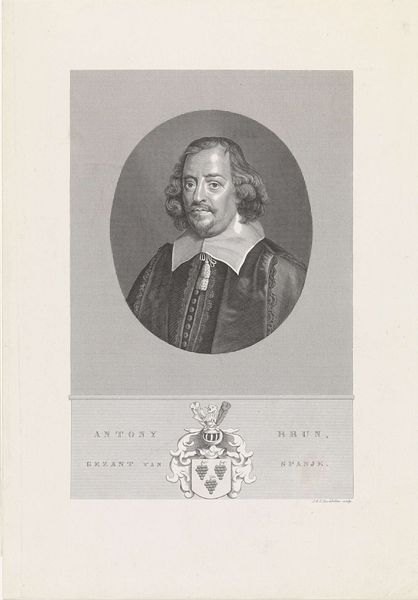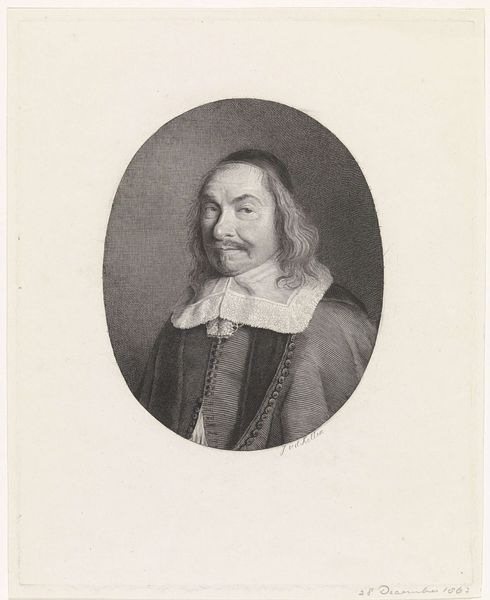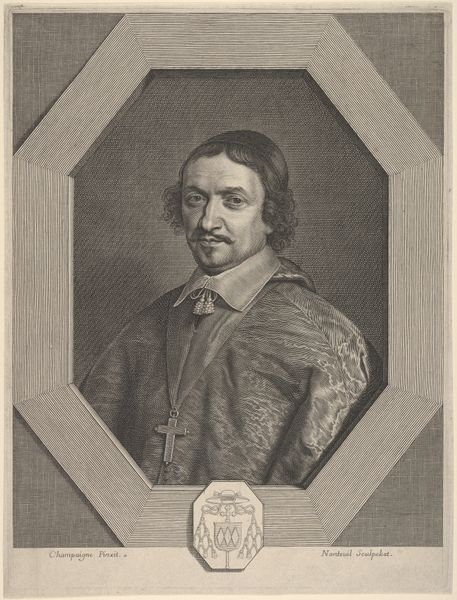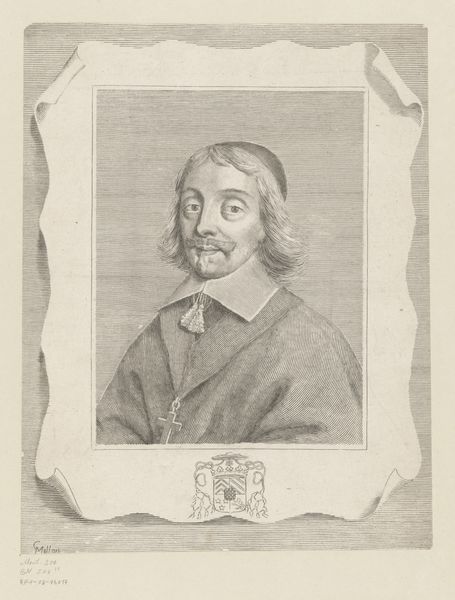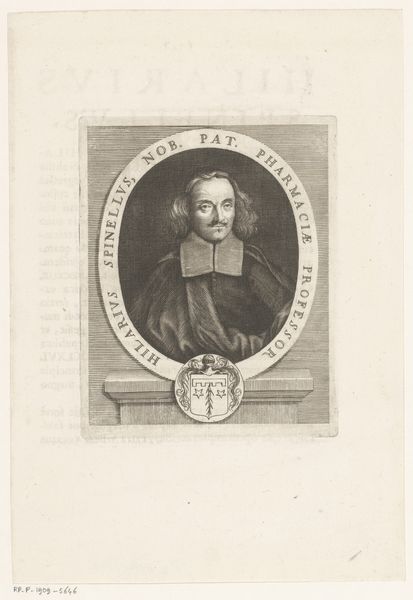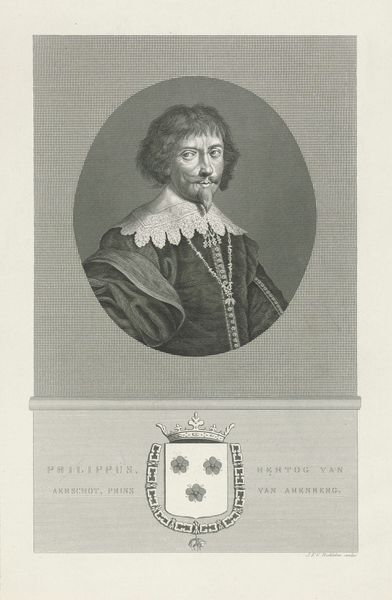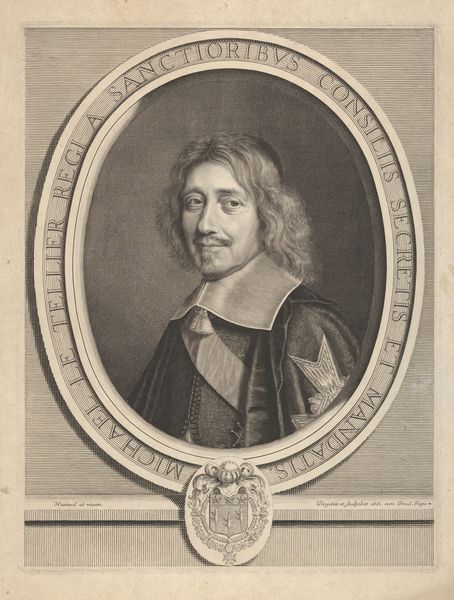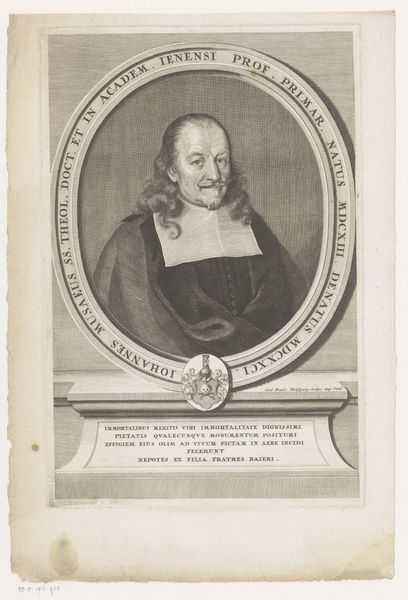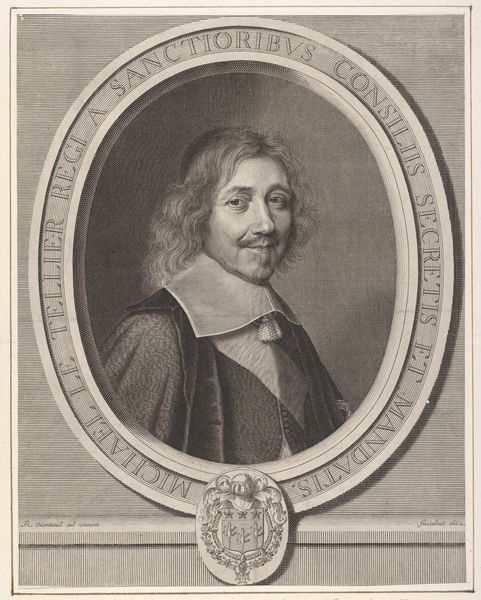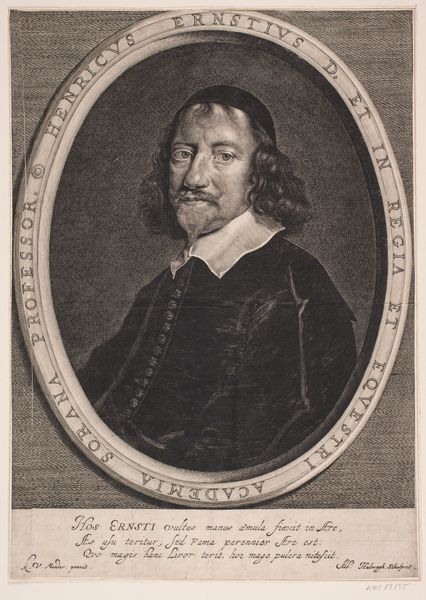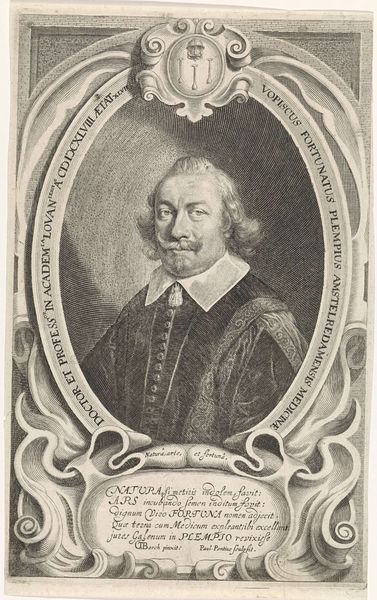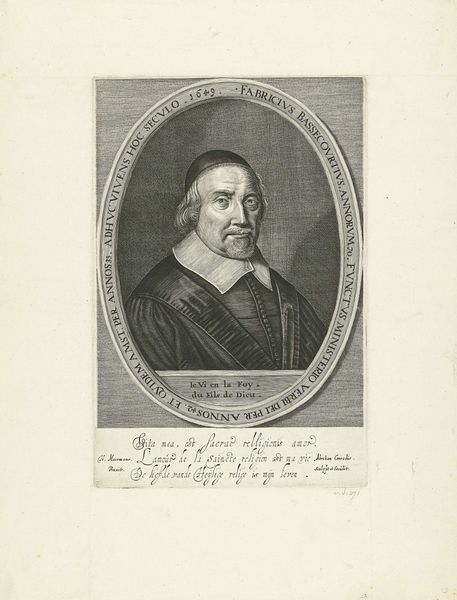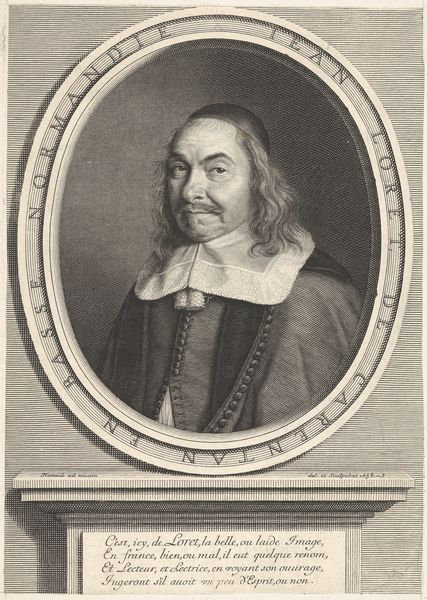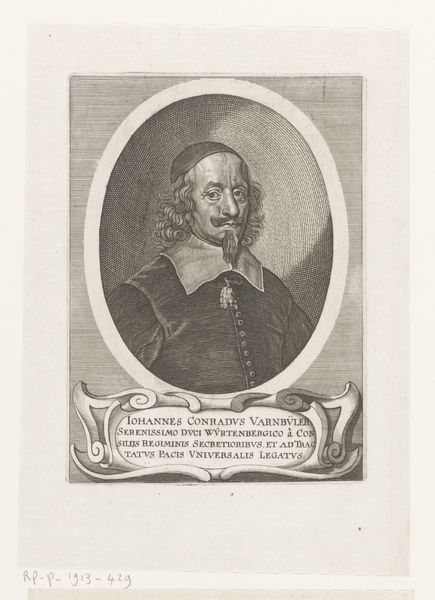
Dimensions: height 303 mm, width 224 mm
Copyright: Rijks Museum: Open Domain
Curator: This is a portrait of Johan de Knuyt by Jan Frederik Christiaan Reckleben, made sometime between 1861 and 1863. It's an engraving, currently held at the Rijksmuseum. Editor: What strikes me immediately is its almost haunting quality. The monochromatic tones, the stiff pose, the subject’s distant gaze – it evokes a sense of formality but also perhaps, melancholy. Curator: It is neoclassical in its adherence to realistic portrayal and idealized form, but something about the details of his garb speak to a very real person, an official perhaps? I can't help but see that the very large white collar might be irritating to wear all day, so what does that signal? What price, status? Editor: Precisely! Clothes function here as social armour, marking class and adherence to cultural codes that sustain hierarchy. His portrait is literally an "emblem" of power...note the elaborate crest. I wonder what sort of governance De Knuyt wielded, and how that relates to ideas of sovereignty during the mid-19th century, given that nationalism was rising. Curator: The meticulous lines of the engraving allow us to pore over the subject’s face, maybe to capture the psychological depth in this period, beyond simply capturing someone’s likeness. I can almost imagine what Johan's study must've looked like, do you suppose this hangs above the fireplace in his library? Editor: I think context matters a lot here – for whom was this image produced? How did this type of visual culture bolster narratives of Dutch exceptionalism or empire? The "neutrality" of Realism can, in some ways, normalize a very specific, very ideological worldview. Curator: Fair points, though I find the act of creating and appreciating art in itself carries a universal, almost humanistic sentiment... that in and of itself makes art valuable regardless of specific context or motivation. It feels rather comforting in this loud modern world to have such images connecting us through history. Editor: Comforting perhaps, but comfort can also breed complacency. This image compels us to confront our assumptions about art, power, and history, rather than passively consuming another story about great men of the past. I would encourage all viewers to confront that complacency... think critically, always.
Comments
No comments
Be the first to comment and join the conversation on the ultimate creative platform.
